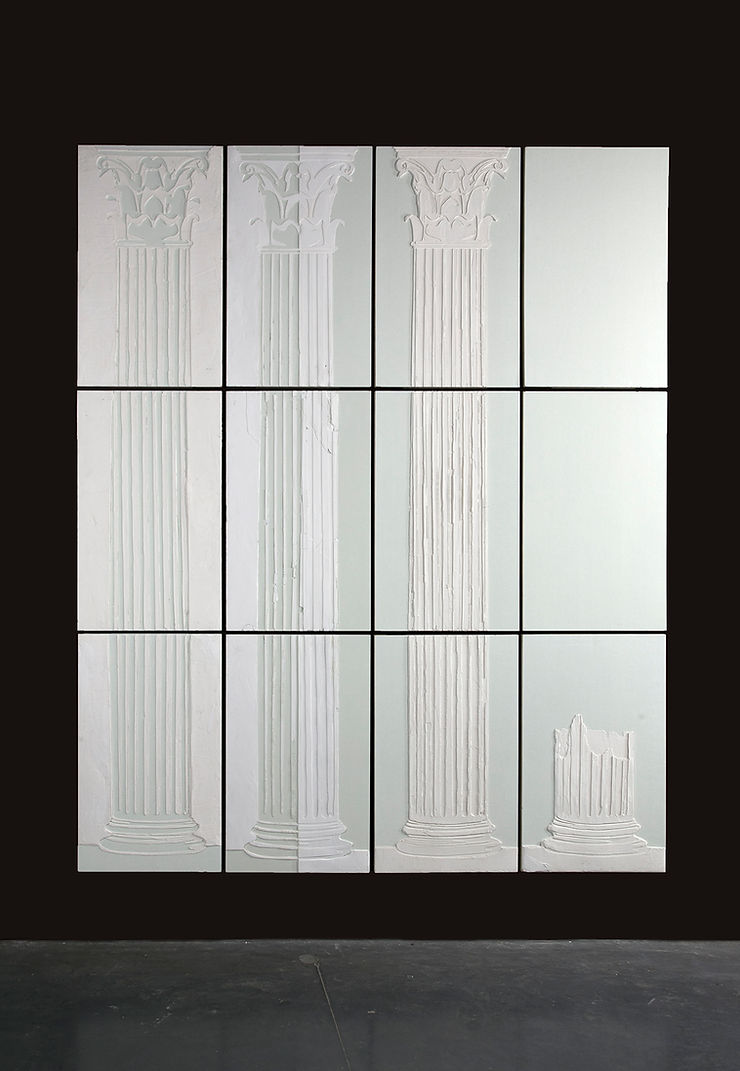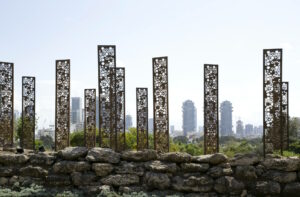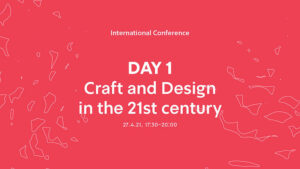
Photo: Hadar Saifan
What
Plaster, Formica laminate; mold casting
Who
Yonatan Ullman, b. 1982
Why
“This series of plaster reliefs presents the ‘life cycle’ of a Corinthian column, one of the three main orders (styles) of ancient Greek and Roman architecture, in four stages: The column is “imprisoned within the block”; one half of the column is “imprisoned within the block” while the other half has been “extricated from the block”; like the birth of Venus, the column is “extricated from the block” and is seen in all its glory; all that remains of the glorious column is a stump.”
In order to create this work, I developed a unique technique that involves casting layers of plaster into thin molds placed on Formica surfaces. The result is a work that ‘hovers’ in the undefined space between two and three dimensions, between an unrealized proposal for a sculpture and the vague memory of a sculpture that once was yet no longer is. The materiality also creates an elusive visual effect – the white Formica has a greenish tint, while the white plaster appears to have a pinkish one.
This work presents a sequence of four scenes that can be viewed as a story unfolding in space and concerned with its own process of creation – a self-reflexive metaphor of the creative process from a perspective that views all temporal possibilities as occurring simultaneously. The stage of the idea’s germination is a womb-like process of incubation, which is presented as the ‘negative’ of the finished column; the prolonged execution process is represented as a birth, or a transition from ‘negative’ to ‘positive’; the moment in which the work presents itself in full is represented as a glorious Corinthian column. What follows is the recognition (which is usually avoided) that the end of every creation is death – a stage represented by the felled column.
“My grandmother, Lisa Ullman, spent over a decade – from age 77 to age 87 – retranslating Josephus Flavius’ ‘The Jewish War’ from Greek into Hebrew. When asked in an interview how she achieved this, she answered simply: “One page at a time.’”
Where
On display at the Rothschild Gallery, Tel Aviv Biennale of Crafts & Design, MUZA – Eretz Israel Museum, Tel Aviv.
More Articles

New Acquisitions: Gifts from the Tennenbaum Collection to the Glass Pavillion Over 70 glass items from the Rivka and Zvi Tennenbaum Collection have been donated to the Glass Pavilion in memory of their son, the flute player Yadin Tennenbaum, who was killed at the Suez Canal in the Yom Kippur War
18.04.24

New Acquisitions: Works Exhibited at the Biennale of Crafts & Design Some 60 artists whose works were exhibited at the Biennale of Crafts & Design held at the museum in 2020 and 2023 generously contributed their works to the collection of MUZA, Eretz Israel Museum, Tel Aviv
18.04.24

International Conference: DAY 1 – movies and lectures
24.01.22
